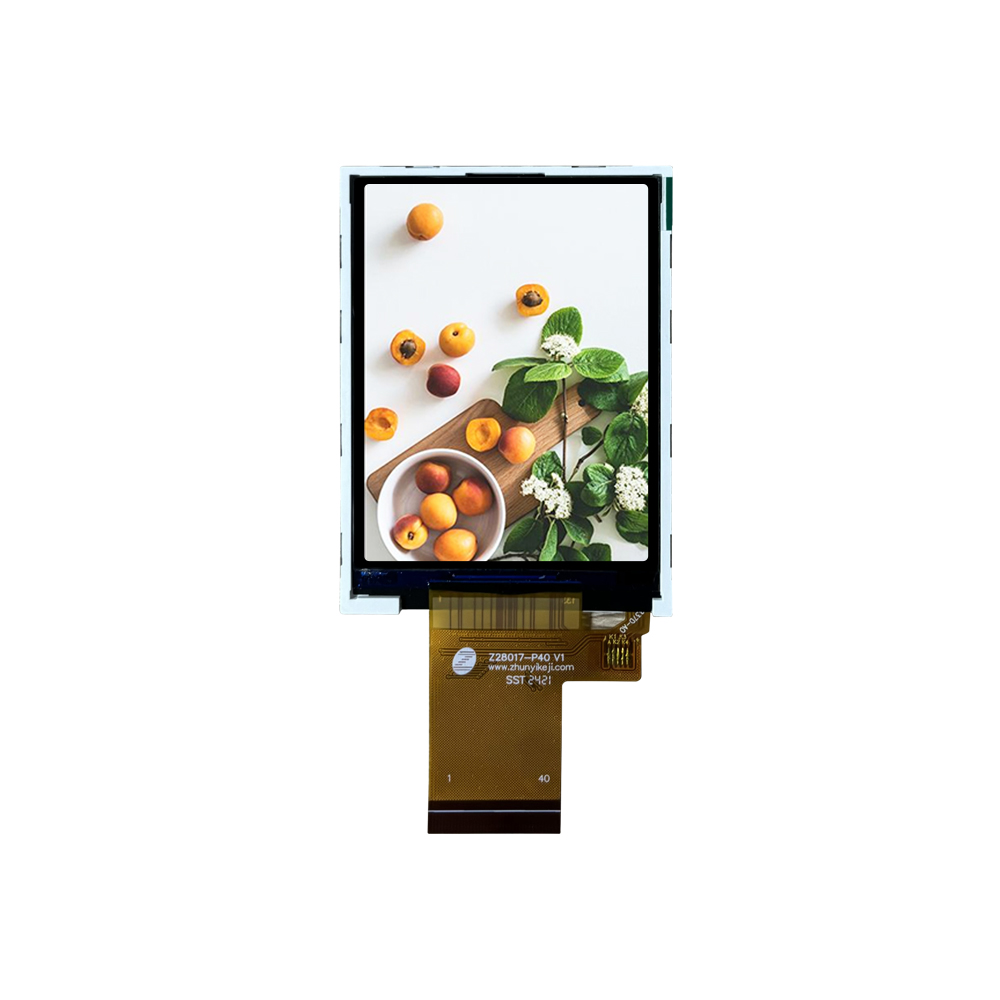



A 2.83-inch IPS LCD display with a resolution of 400x800 pixels and an aspect ratio of 2:1, supporting interfaces such as QSPI, RGB, and MIPI, is designed for compact devices that require high-resolution and detailed visuals in a more vertical-oriented format. This configuration offers excellent clarity and detail, making it suitable for applications where a taller screen is preferred over a widescreen format.

Key Specifications
Display Size: 2.83 inches diagonal.
Resolution: 400x800 pixels, providing sharp images suitable for detailed graphics, multimedia content, and user interfaces. The 2:1 aspect ratio (also known as 16:8 or "phablet" format) is less common but can be beneficial for specific applications like e-readers, digital watches, or devices that benefit from a taller screen.
Aspect Ratio: 2:1, which is not the standard widescreen format but offers more vertical space for applications that benefit from this orientation.
Interface Options:
QSPI (Quad Serial Peripheral Interface): A synchronous serial communication interface offering faster data transfer rates compared to traditional SPI, suitable for short-distance communication in embedded systems.
RGB (Red, Green, Blue): An analog interface where each color component is sent separately. It's simple and straightforward but may be less common in modern mobile devices compared to digital interfaces.
MIPI DSI (Display Serial Interface): A digital interface widely used in mobile devices for connecting the display panel to the system's graphics processor. MIPI offers high-speed data transmission and low power consumption, making it ideal for battery-powered devices.
Viewing Technology:
Full View: Ensures content remains visible from various angles.
IPS (In-Plane Switching): Known for better color reproduction and wider viewing angles compared to traditional TN (Twisted Nematic) panels. IPS technology aligns the liquid crystal molecules in a way that enhances these properties.
Features
High Pixel Density: With a resolution of 400x800 on a 2.83-inch screen, this display offers a pixel density of approximately 350 PPI (pixels per inch), providing extremely sharp and clear visuals.
Wide Viewing Angles: Especially if it's an IPS panel, this display should offer good visibility from multiple angles, reducing color shift and maintaining clarity.
Color Accuracy: IPS panels are known for their superior color accuracy and consistency, making them ideal for graphic design, video editing, and professional photography.
Energy Efficiency: Depending on the backlight and driver electronics, these displays can be optimized for low power consumption.
Durability: Depending on the build quality, these displays can be quite durable, suitable for both consumer and commercial use.
Applications
E-readers: The taller screen can accommodate more lines of text without scrolling, enhancing readability.
Digital Watches: For smartwatches or fitness trackers that need a compact yet detailed display, especially those oriented in portrait mode.
Medical Devices: High-resolution screens are important for diagnostic tools and patient monitoring equipment, especially where precise information display is necessary.
Point-of-Sale Systems: POS terminals can benefit from the clear and detailed visuals provided by such displays, particularly when displaying lists or forms.
Specialized Mobile Devices: Devices that require a taller screen for certain applications, such as note-taking apps or specialized productivity tools.
Integration Considerations
When integrating such a display into a product, consider the following:
Controller Compatibility: Ensure your system's graphics controller supports one or more of the available interfaces (QSPI, RGB, MIPI).
Driver Software: Check if the manufacturer provides driver libraries or example code to facilitate software development.
Power Requirements: Understand the voltage and current requirements of the display to ensure proper power management.
Touchscreen Capability: If touch input is required, verify whether the display includes a touchscreen layer and what kind of touch controller is needed.
Environmental Factors: Consider the operating temperature range and any necessary protective measures against dust, water, or shock.
Mounting Options: Ensure that the display fits within the intended device enclosure and that appropriate mounting solutions are available.
Example Products
Manufacturers like AU Optronics, BOE Technology Group, LG Display, Samsung Display, and others produce panels that match these specifications. These panels are typically used by OEMs (Original Equipment Manufacturers) in their products, and you can find them integrated into many commercial devices.
Conclusion
A 2.83-inch FWVGA (400x800) IPS LCD display with support for QSPI, RGB, and MIPI interfaces represents a sophisticated choice for designers looking to integrate a high-quality, compact display into devices where a taller screen format is beneficial. Its combination of resolution, viewing angle, and interface options makes it suitable for applications requiring detailed visuals and wide-angle visibility in environments where portability and performance are key.
If you need more specific details about particular models or have other questions regarding the integration or suitability of this display for your project, feel free to ask!
Note on Aspect Ratio
The 2:1 aspect ratio is less common than the standard 16:9 widescreen format but can be advantageous for applications where a taller screen is preferred. The 2.83-inch size maintains a balance between portability and screen real estate, making it easy to handle while still providing sufficient room for viewing content. This makes it especially suitable for devices where users often view content in portrait orientation.
Additional Notes on Interfaces
QSPI Interface: Offers faster data transfer rates compared to traditional SPI, making it suitable for applications requiring rapid data exchange between the microcontroller and the display.
RGB Interface: While less common in modern mobile devices due to its higher pin count and analog nature, it can still be useful in certain applications where compatibility with legacy systems is necessary.
MIPI DSI Interface: Provides high-speed data transmission and low power consumption, making it the preferred choice for modern mobile and portable devices. It is especially useful for applications requiring fast refresh rates and minimal latency, such as interactive displays or gaming devices.
